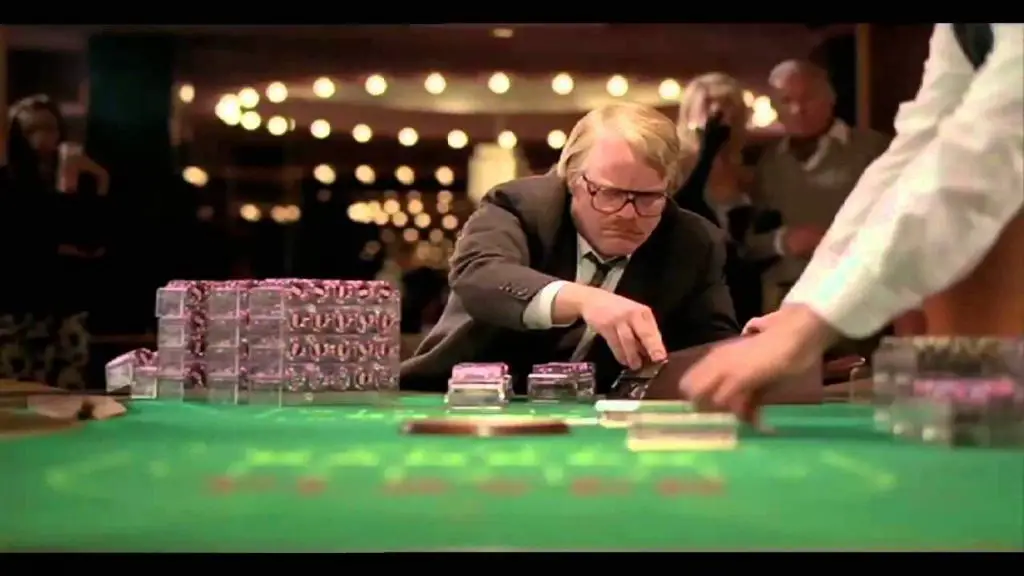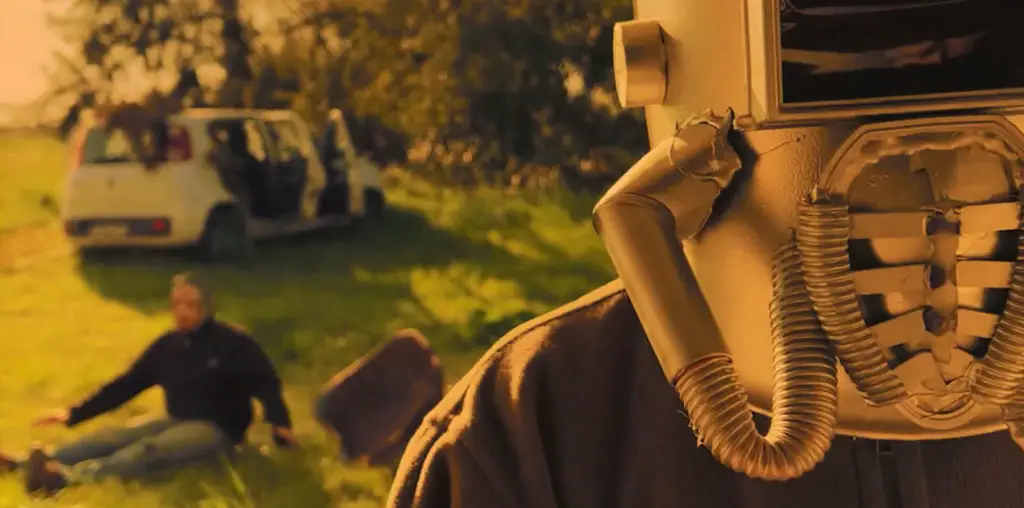
EXT: DRIVEWAY OF HOUSE – DAY
Jesse tosses her small black bag into the back of the jeep and starts the one thousand mile drive to Amarillo.
“Wait a second. Does that say ‘drive to Amarillo?'”
Sharon, the director of the as-of-yet uncompleted script and my erstwhile writing partner, spun around in the office chair. Her face had gone white.
“We can’t shoot a film where somebody drives to Amarillo. That’s crazy. This is a graduate school thesis film! It’s a short film! It’s supposed to be a reasonable film to make!”
I studied her calmly as her voice grew shrill.
“Doesn’t the action take place in Texas? At that crazy cross?” I queried.
The ‘crazy cross’ to which I referred is located in Groom, Texas, 40 miles east of Amarillo, Texas. You think you have been to the middle of nowhere? Groom, Texas is the capital of Nowhere. Yet, out there just off Interstate 40, a man by the name of Steve Thomas erected a 19-story tall cross out of concrete and steel, and covered it with brilliant white aluminum siding. Sharon, who is from Amarillo, had gone out to the site with her dad five years before this day, and had sworn to one day make a film there. But with a student film budget of about $10,000 bucks, she certainly hadn’t thought it would be this film.
“Look,” I said, ultra-reasonable, “We can recreate Texas, sort-of, in California. But no way can we recreate that cross. We either have to go there, or change the story.”
Silence.
“Do you want to change the story? ‘Cause we can do that.” O.K., I was pushing her. She replied with a slow shake of her head.
“O.K. then. We have to go to Amarillo. It’s that simple.” And I turned back to the computer with the smug smile of the uninformed. I had written scripts, but I had never made a film, and I had certainly never produced one. I thought I had an idea of what was involved.
I didn’t.
I admit I was afraid that finding a cast and crew willing to take a five-day road trip to outside of Amarillo, Texas would be next to impossible. Much to my amazement, every person we ended up asking, without exception, professed not only willingness to go on the road, but excitement about it. With the budget growing as quickly as my anxiety about the trip, we readied ourselves to take a crew of 10, several hundred thousand dollars worth of equipment, two actors, and a novice PA from Los Angeles to Texas in a rented 29-foot RV.
With the concentration of generals planning an attack, Sharon and I mapped out every moment of our shooting and driving time, from leaving Los Angeles at midnight on Wednesday to our proposed return the following Monday. On top of this, I had two additional L.A.-based shooting weekends to plan for after we returned from Texas. But the logistics of getting rented equipment from Burbank to Topanga Canyon (about 22 miles) paled in comparison to getting equipment from Burbank to Kingman, Arizona, our first shooting stop (about five hundred miles).
I know I don’t have to explain to anyone reading this article the stresses of being on a film set – how hectic it is, how much every second counts, how difficult it is to get the least thing done and done correctly. But putting together a moving film set on a limited budget about finished me off. For one thing, Sharon and I realized, to our horror, that if we got out on the road and any of the equipment went down, we were totally screwed. There wasn’t going to be any phoning back to L.A. to have the such-and-such flown out to location. We had one shot to get the coverage in Texas, and that was all we were going to get. Only the confidence of the totally inexperienced gave us the guts to move forward. If we had had any real idea of all the things that could go wrong, I think we would have thrown up our hands and called ourselves certifiably crazy.
The following narrative diary is my description of our five days on the road. Now, no one with any film experience will be fooled into thinking I wrote this at the time. No, I was a bit too busy cooking the crew’s breakfast sandwiches and emptying the RV’s sewage tanks to jot down my reflections while on location. I did, however, compile notes and pictures by which to remember just how it all happened.
Now, almost a year later, with the film in some festivals and the next script in the computer (well, almost), I am compelled to write an account of our experiences on our two thousand mile odyssey, partly so I can remember it, and partly to warn those who just might be brave and crazy enough to take their own first film on the road.
DAY ONE ^ We picked up the RV out in the valley at three-thirty in the afternoon, and almost aborted the entire trip when we realized one of us would have to drive the damn thing through rush hour L.A. traffic. By the time we made it back to the apartment, I had seen my life flash before my eyes three times, and I wasn’t even the one driving. And getting home was only half the battle; we now had to park the largest vehicle either one of us had ever been in somewhere on our West L.A. street. We finally found a spot six blocks away across from La Cienega Park.
The entire house was completely full of equipment brought down from Cal Arts and various rental houses. The cat was so freaked she wouldn’t even come out of the bedroom. Coils of cable, camera boxes, you name it, were all stacked almost waist high in the living room, and all to be packed into three vehicles, along with the food, luggage, and people, not to mention props and costumes.
The film tells the story of a woman who drives from Los Angeles to Amarillo in hopes of reconciling with her religious mother. The main character’s journey – both physical and emotional – is key to the film. We wanted the sense of the immense landscape in front of her, the incredible distance that separates this woman from her childhood, from her mother. The few stops along the way that we made were pivotal from a character development standpoint, but they also need to show a sense of movement towards the final destination.
Amarillo is almost exactly one thousand miles from Los Angeles, pretty much a straight shot on Interstate 40. It is now late September; in July, Sharon and I took a road trip to scout locations. We decided that the T&A Truck Stop in Kingman, Arizona would be the first spot we stopped. In order to get there by first light, we would have to drive straight through the night. I volunteered to take the first RV driving shift.
Of course, I had planned to get a nap before we left L.A. at midnight, and of course, I came no where near even sitting down for five minutes, much less sleeping. To complicate matters, only Sharon and I and one other person, Neil Wilson, one of our actors, could drive the RV. Two others members of the group, in shifts, trailed behind in the jeep.
DAY TWO ^ Day One and Day Two pretty much blend into each other, especially for me, the first shift driver. The first two hours were fine. I was cranked up on coffee and good spirits, as we had actually made it out of Los Angeles with all our equipment and people in one piece. But by two-thirty in the morning, the road was pitch black and I had been up for 20 straight hours. Katherine, our lead actress, had volunteered to ride shotgun to keep me alert, and she was casting a worried eye in my direction. When we pulled off for gas at three-fifteen, Neil volunteered to take over.
Get the exciting conclusion in part two of TWO WOMEN, A CROSS AND A MOVIE>>>.

